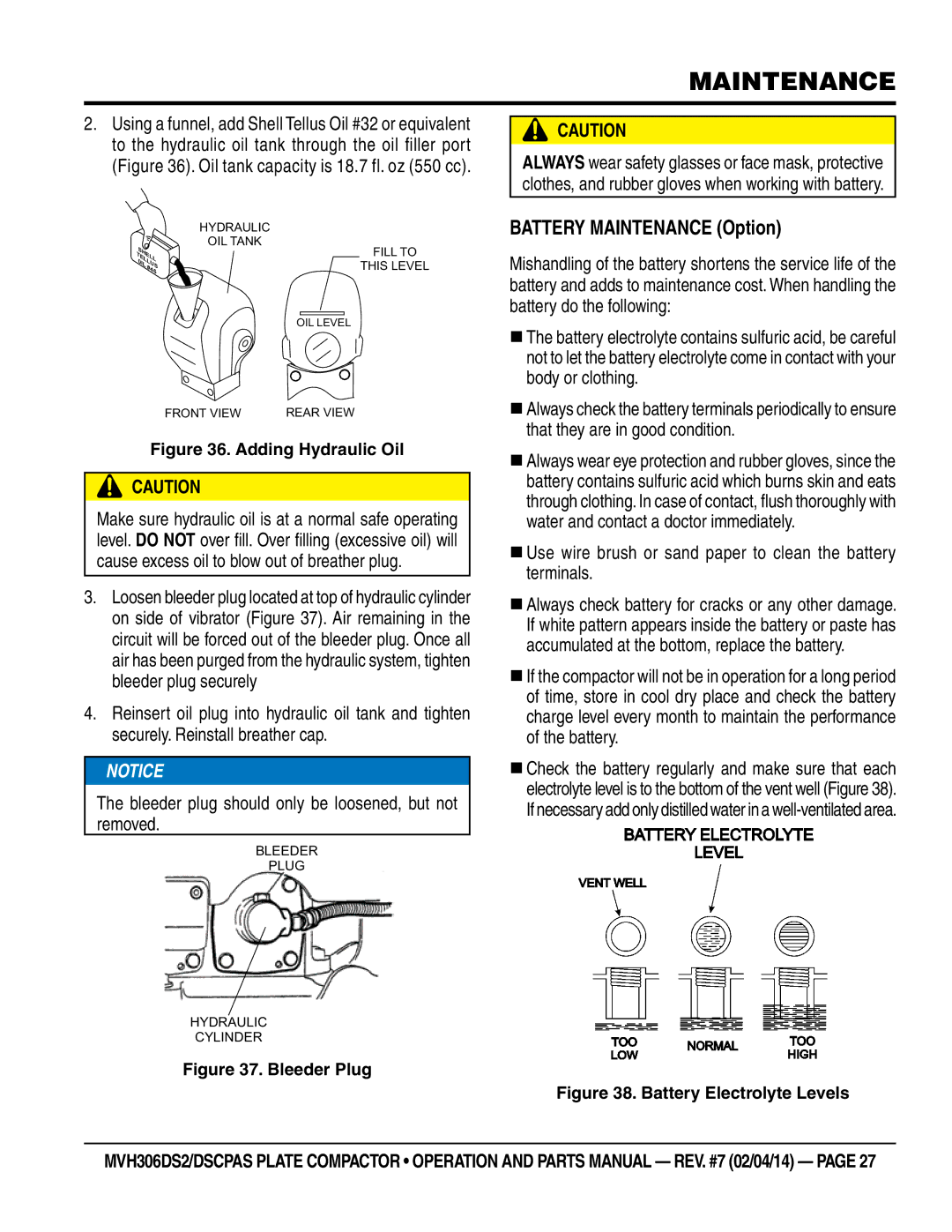
2.Using a funnel, add Shell Tellus Oil #32 or equivalent to the hydraulic oil tank through the oil filler port (Figure 36). Oil tank capacity is 18.7 fl. oz (550 cc).
HYDRAULIC
OIL TANK
S |
|
|
| FILL TO |
TE EL | ||||
H |
|
|
| |
| L | L |
| |
0I |
| L |
|
|
| U | THIS LEVEL | ||
L | #46 | |||
| S |
| ||
OIL LEVEL
FRONT VIEW | REAR VIEW |
Figure 36. Adding Hydraulic Oil
![]() CAUTION
CAUTION
Make sure hydraulic oil is at a normal safe operating level. DO NOT over fill. Over filling (excessive oil) will cause excess oil to blow out of breather plug.
3.Loosen bleeder plug located at top of hydraulic cylinder on side of vibrator (Figure 37). Air remaining in the circuit will be forced out of the bleeder plug. Once all air has been purged from the hydraulic system, tighten bleeder plug securely
4.Reinsert oil plug into hydraulic oil tank and tighten securely. Reinstall breather cap.
![]()
![]() NOTICE
NOTICE
The bleeder plug should only be loosened, but not removed.
BLEEDER
PLUG
HYDRAULIC
CYLINDER
Figure 37. Bleeder Plug
maintenance
![]() CAUTION
CAUTION
ALWAYS wear safety glasses or face mask, protective clothes, and rubber gloves when working with battery.
BATTERY MAINTENANCE (Option)
Mishandling of the battery shortens the service life of the battery and adds to maintenance cost. When handling the battery do the following:
The battery electrolyte contains sulfuric acid, be careful not to let the battery electrolyte come in contact with your body or clothing.
Always check the battery terminals periodically to ensure that they are in good condition.
Always wear eye protection and rubber gloves, since the battery contains sulfuric acid which burns skin and eats through clothing. In case of contact, flush thoroughly with water and contact a doctor immediately.
Use wire brush or sand paper to clean the battery terminals.
Always check battery for cracks or any other damage. If white pattern appears inside the battery or paste has accumulated at the bottom, replace the battery.
If the compactor will not be in operation for a long period of time, store in cool dry place and check the battery charge level every month to maintain the performance of the battery.
Check the battery regularly and make sure that each electrolyte level is to the bottom of the vent well (Figure 38). If necessary add only distilled water in a
